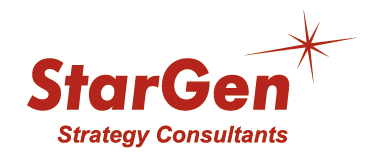Achieving a Healthier Future, Together
Perspectives from our teams
Now, at time when the pace of change in the health care landscape is accelerating, companies must enhance the depth of thought and the timeliness of product, market and company shaping activities to maximize the commercial value of their portfolio. We have identified four components which are particularly critical to maximize opportunities and minimize risks.
- Focus on value creation
Success starts with a stronger alignment of product development with evolving stakeholders’ value drivers. Although best performing companies have improved collaboration among their R&D, Medical and Commercial organizations when defining the aspirational positioning and associated target product profiles, the frame of reference for product development often remains narrowly focused on the relative efficacy and safety benefits. Developing a thorough understanding of what drives value and behavior for the involved stakeholders calls for a deeper and more holistic analysis of the patient journey with a disease and of the local and national hurdles to access markets. Identifying and selecting the best partners to develop and implement holistic solutions to deliver health outcomes will require forging true partnerships with key stakeholders.
- Minimizing risks
Evaluating the attractiveness of a market and driving product development are challenging, with the need to base decisions on an anticipated standard of care, healthcare cost containment policies, stakeholder and competitor landscape as much as 5 to 10 years in the future. Structured forward-thinking based on scenario planning techniques can help teams proactively develop management responses to anticipated plausible landscape futures and ultimately fully capture opportunities and mitigate risks.
- Translating brand strategy into impactful tactics
To adapt to the paradigm shift in the stakeholder landscape, life sciences companies have developed new capabilities and tactics to enhance their value in the eyes of key stakeholders beyond physicians. However, conservatism and lack of adequate performance feedback mechanism represent barriers to reallocating resources and expanding stakeholder engagement. In most companies, 70% of resources remain allocated to the salesforce even though traditional detailing is decreasing in receptivity and overall effectiveness. Winning go-to-market strategies engage the network of stakeholders in an integrated manner and are driven by the delivery of value. This requires an alignment of cross-functional global and local teams (Medical, Market Access, Marketing and Sales) on the stakeholder influence maps and behavioral objectives. Another challenge for companies is to improve the cross-functional collaboration when designing and implementing tactics. As national and local hurdles to access are increasing, it is getting even more critical that those who are creating the tactics share an in-depth understanding of the critical dynamics within the local system of care.
- Delivering excellence at launch
The pre-launch and launch phases are even more critical for success than in the past. Launch preparation should start long before final decisions are made on label and price. Beyond the tailored road map that global and local teams need to orchestrate their activities, it is critical to define quality standards for crucial ones and use external objective to track launch progress. Setting up an effective performance management system to get dynamic market feed-back through lead indicators is essential to coordinate course-correction steps and ensure timely implementation. Finally, enabling launch teams to prepare themselves and stress-test their launch strategy and tactics through business simulation (war gaming) could be an effective technique. It is a particularly attractive approach to mobilize teams and to incorporate possible customers and competitors ‘moves in the action plan.
While life sciences companies are experimenting with point solutions such as downsizing the salesforce, implementing field market access teams, piloting disease management programs to adapt their go-to-market model, they are not going far and fast enough to address the ongoing profound shifts in the health care landscape. In most companies, 70% of resources are still allocated to the salesforce even if the traditional detailing has admittedly decreased in productivity.
To ensure sustainable success, companies need to dynamically redesign their approaches to stakeholders, and channels to effectively deliver an extended value proposition in line with evolving key stakeholders’ expectations, roles and interplay in the decision process. Rather than simply broadcasting messages, companies should consider promoting conversations around health outcomes and developing co-creative partnerships with key stakeholders. Establishing the right relationship model begins with redefining the audience. To meet changing demands, companies must develop their strategic listening capability to understand the nature of collaboration which is required and remain agile and responsive to reflect insights gained from stakeholder interactions. As there is no “one size fits all” model, companies have to be enabled to operate multiple models that are aligned to the offering in distinct therapies and simultaneously adjusted to the position in the product’s life cycle and the geographical variances in the system of care.
Successfully implementing these models requires improving collaboration across silos and developing new accountabilities, capabilities, incentive schemes metrics and mindsets.
Pursuing value-based population health management and delivery of healthcare
Across the world, health systems are facing common challenges:
- Health expenditures rates are forecast to outpace national income growth over the foreseeable future
- Longer life spans and increasing prevalence of chronic illnesses
- Unacceptable disparities in how patients are managed despite clear recommendations and standards of care by scientific societies and healthcare authorities
- Suboptimal outcomes and patient experience due to fragmented, duplicated, and uncoordinated services, in addition to low drug compliance and adherence rates
- Health consumers demanding transparent information with which to make healthcare decisions
- Shortage of healthcare professionals
To ensure sustainability of health systems, decisive actions on accessibility, quality, and efficiency are required beyond the redesign of care delivery structure and drug price controls.
The review of the evidence suggests opportunities to deliver better outcomes and lower costs at all stages of the patient journey:
- Raising disease awareness and helping individuals actively manage their health
- Enabling early detection of the disease, hence early intervention
- Stratifying populations by risk and care needs
- Tailoring interventions based on the health care needs of individual groups
- Improving coordination and integration between primary care, secondary care and social services follow-up to prevent complications
Helping patients improve adherence using simple, attractive tools and techniques
Radical changes in the healthcare landscape, evolving customer expectations and the escalation of investment required for a successful launch place irresistible pressure on the pharma traditional product-selling model.
- Convergence of Nanotechnology, Biotechnology, Information technology, and Cognitive science (NBIC) are transforming medicine and care delivery
- New entrants are moving fast to capture value through the collection and analysis of “real world data” and the management of knowledge
- The move to value-based health care sharpens the focus on outcomes and efficiency at each step of the patient journey:
- Prevention and early detection
- Treatment optimization
- Medical adherence
- Monitoring and follow-up
- Most influential pharma customers increasingly demand holistic solutions that deliver the best outcomes at sustainable costs and not just drugs or devices. They need help to implement efficient person-centric models of care delivery.
- Healthcare purchase decision-making, now involving a broader set of stakeholders beyond clinicians, continues to consolidate, concentrating leverage among a smaller number of increasingly powerful buyers
- Consumers today want to take an active role in the management of their health and demand a healthcare experience that mirrors the convenience and transparency of their purchasing in other categories.
Pharma has a choice: it can revolutionize its business model and offer service components “beyond the pill” that enable their partners to deliver health outcomes, or resist change and be identified as simply a drug peddler.


Let’s start a conversation
Whether you're looking for answers, would like to solve a problem,or just want to let us know how we did, you'll find manyways to contact us right here

